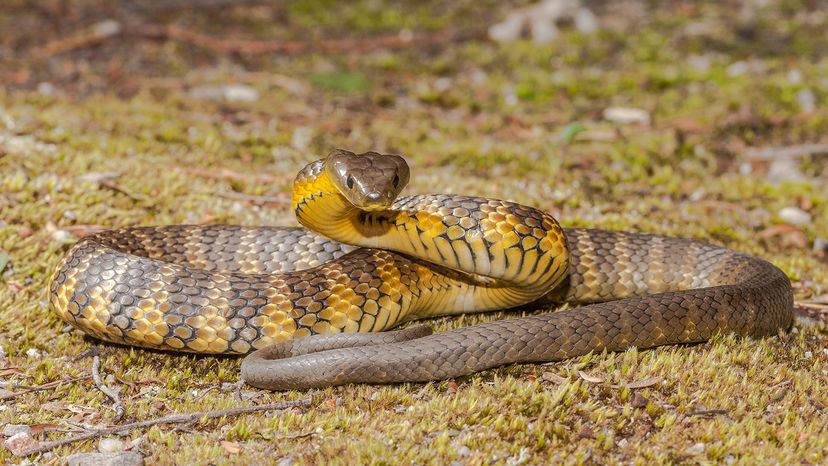
The tiger snake, known for its distinctive banding and potent venom, is among the most venomous in the world. Found across various regions of southern Australia, including several offshore islands, tiger snakes have adapted to a wide range of environments, from wetlands to forests.
Despite their fearsome reputation, tiger snakes play an important role in their ecosystems by controlling populations of small mammals, birds and amphibians. Their ability to thrive in diverse habitats, coupled with their impressive defensive displays, makes them one of the most intimidating snake species you can find Down Under.
Advertisement